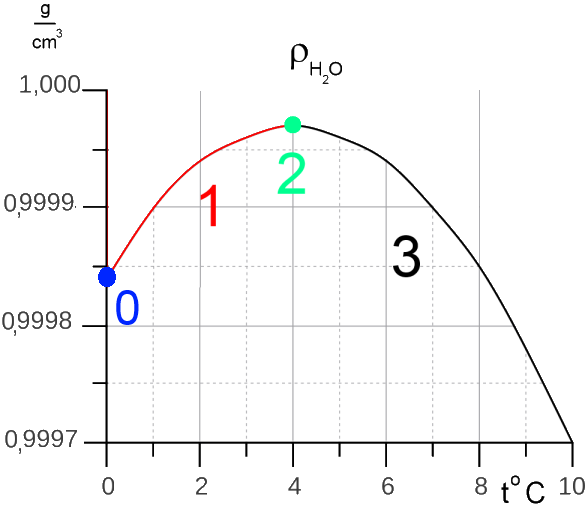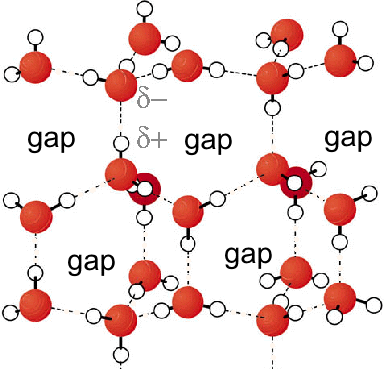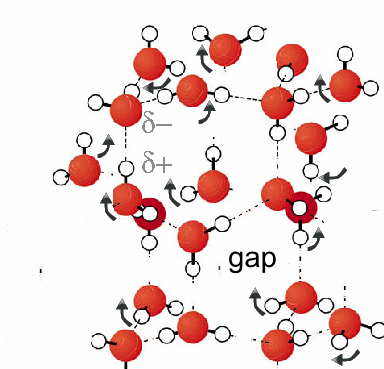





The voluminal mass of water varies as a function of temperature:

0:

In ice the rigid structure due to dipole-dipole attractions reveals many gaps: the voluminal mass is low.
1:

Between 0oC and 4oC, following the movement of molecules, the rigid structure due to dipole-dipole attractions disappears gradually and gaps gradually disappear: the voluminal mass of water increases.
2:

At 4oC, any gaps due to dipole-dipole attractions are gone. The volumial mass of water is a maximum and is about $\rho_{H_2O}=1 \frac{g}{cm^3}$.
3:

After 4oC, the "normal" trend is observed: Due to increasingly intense movement of molecules, the intermolecular distance increases and the voluminal mass of water decreases.